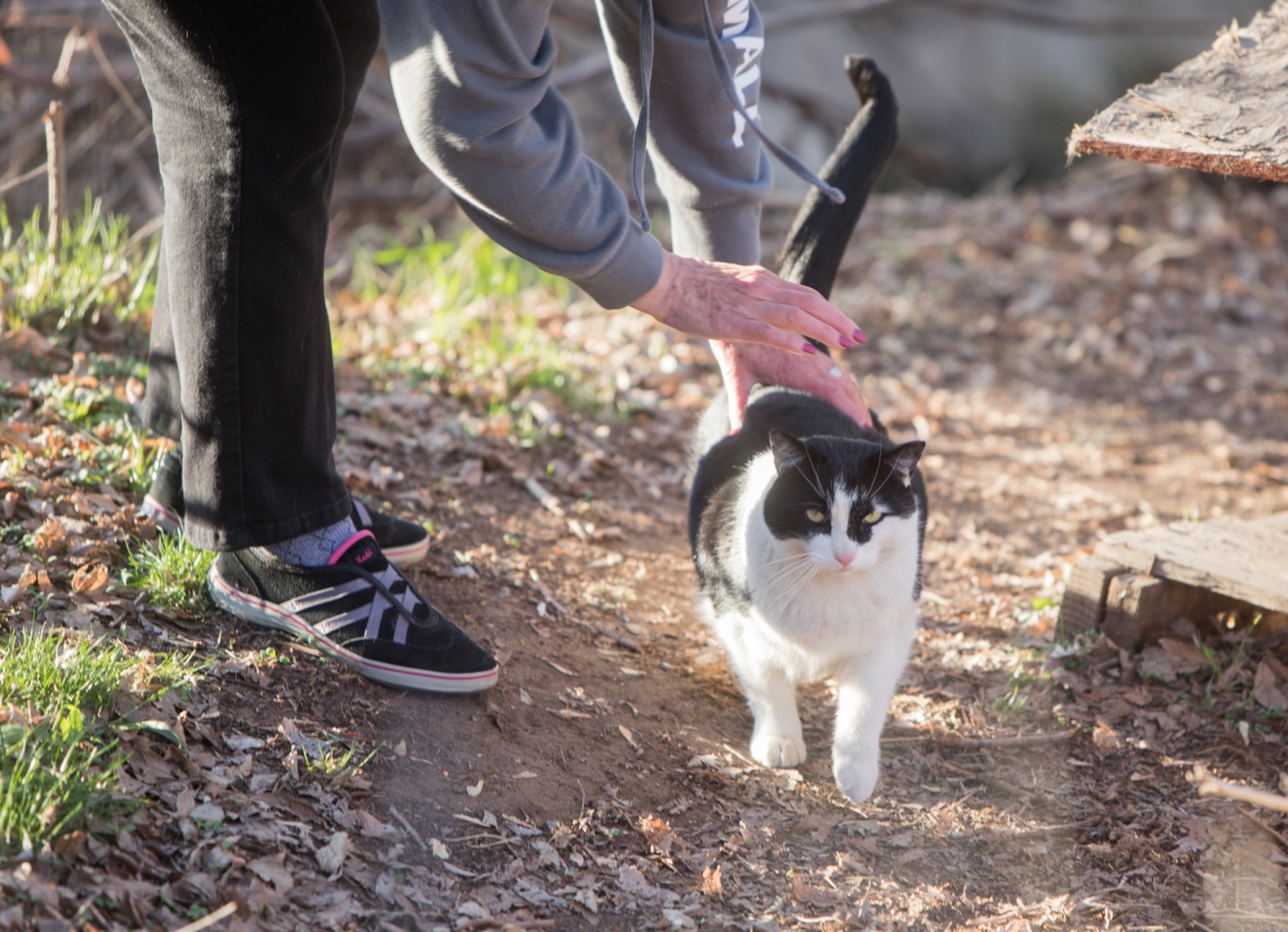
April Muller and Kelsey Gilmore-Futeral
It was a typical Friday morning. I finished my workout and drove to my favorite coffee shop for an iced Americano. I had to park a little farther than usual, but I made an interesting new friend along the way.
“That’s Bob!” Startled, I looked up to see where the voice was coming from. “He’s friendly. He won’t live inside.” The voice belonged to a local homeowner who takes care of Bob and the other so-called “community cats” living in the neighborhood.
“Nice to meet you, Bob,” I say, looking back down at the nimble, four-legged stranger who’s been walking three steps ahead of me. Her announcement was kind but protective — after all, local governments spend millions of taxpayer dollars impounding and killing free-roaming cats like Bob. He’s not quite feral, but he’s not a house pet, either.
Once impounded in a shelter, Bob’s odds of survival are not in his favor. Current state law requires that all unowned cats be held for seven days, regardless of their health or temperament and regardless of what space (or lack thereof) remains for pets in real need.
In jurisdictions that apply the state law to kill healthy cats, unowned cats rarely make it out of the shelter alive. Rather, they’re housed for the state-mandated seven days, deemed unadoptable due to their (rightfully) stressed demeanor, then killed and disposed of, all at taxpayers’ expense.
This scenario is supported by data which shows that roughly 95% of the animals killed in New Jersey shelters in 2023 were cats like Bob — cats who were happy and healthy living outside, cats who had people caring for them, cats who added to the cultural fabric of our neighborhoods.
While roadblocks in existing state law prevent New Jersey from becoming the fifth no-kill state in the nation (after Delaware, New Hampshire, Rhode Island, and Vermont) a bill is well-positioned to change that in 2025.
Contrary to popular belief, no-kill isn’t about banning euthanasia — a necessary option for animals with irremediable health and behavior issues — rather, it’s about using our taxpayer-funded animal shelters to humanely and efficiently meet the public’s needs. To that end, elected officials have a responsibility to seek out the most proven and cost-effective methods for managing unowned cat populations, not just the most immediate or most traditional.
Trap-neuter-vaccinate-return (TNVR) is the only cost-effective and humane management program that reduces the outdoor cat population, neutralizes nuisance behaviors, and increases the odds of owners being reunited with their lost cats.
Jurisdictions that use TNVR also conserve resources by engaging the community in caring for outdoor cats, reducing impoundment, and ending the unnecessary killing of healthy cats.
So, what can we do about Bob? The new-and-simplified “Compassion for Community Cats” bills S261 / A3635 expand access to TNVR programs in New Jersey, empowering local governments to choose to use public funds more responsibly.
These bills define what a community cat is, create TNVR options for local governments, and offer alternatives to existing state-mandated stray holds. These bills will empower local governments to more efficiently, humanely, and effectively manage cats without compromising animal welfare or pet owners’ rights.
By removing the existing requirement for shelters to house and feed all unowned cats for seven days, more resources will be available for the lost, sick, abused, or surrendered pets our shelters are designed to serve. Cats like Bob would be sterilized, vaccinated, then returned to their outdoor homes, unable to reproduce. Such programs have already reduced both shelter intake and shelter killings in many (if not most!) communities in New Jersey.
With this legislation in place, New Jersey can save cats, save tax dollars, boost shelter morale, and become the next “no-kill” state.
Bob supports S261 / A3635 — will you?
Learn more at bfas.org/njcatlaw
This post is sponsored content
A new bill introduced in New Jersey has the potential to save both money and lives in the state. The bill, known as the “Healthcare Cost Transparency and Accountability Act,” aims to address the rising costs of healthcare and improve access to quality care for all residents.
One of the key provisions of the bill is the establishment of a healthcare cost commission, which will be responsible for monitoring and regulating healthcare costs in the state. This commission will work to identify areas where costs can be reduced, such as unnecessary tests and procedures, and implement measures to lower overall healthcare spending.
By reducing healthcare costs, the bill aims to make healthcare more affordable for all residents of New Jersey. This will not only save individuals money on their healthcare expenses, but also reduce the financial burden on the state as a whole.
In addition to saving money, the bill also has the potential to save lives by improving access to quality care. By ensuring that healthcare costs are kept in check, more residents will be able to afford necessary medical treatments and preventive care. This could lead to earlier detection of diseases, better management of chronic conditions, and overall improved health outcomes for residents across the state.
Overall, the Healthcare Cost Transparency and Accountability Act has the potential to have a significant impact on both the financial well-being and health of residents in New Jersey. By addressing rising healthcare costs and improving access to quality care, this bill has the potential to save money and lives in the state.
